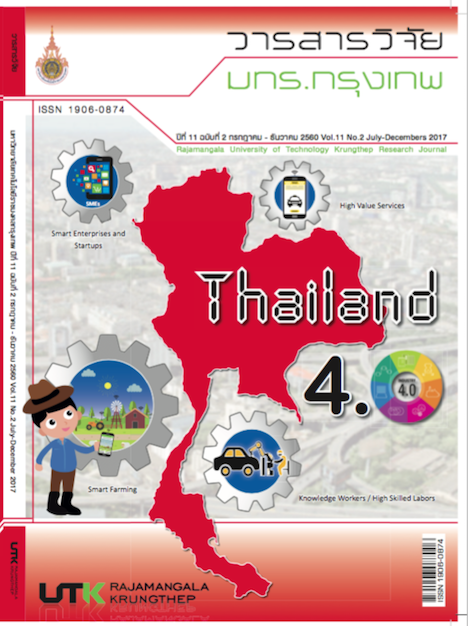Effect of Water-cement Ratio on Modulus of Rupture and Tensile Strain Capacity of Concrete
Keywords:
rupture, modulus of rupture, tensile strain, tensile strength, bending strengthAbstract
This research was aimed to study the modulus of elasticity and tensile strain capacity of concrete. The parameter considered was water-cement ratio. The water-cement ratios were 0.35, 0.55, 0.65 and 0.75.Tensile strain capacity was investigated using flexural test method. The test results showed that the compressive strength of concrete is between 63.40 -497.45 ksc. The modulus of rupture of concrete is between 23.52 – 55.47 ksc and the tensile strain capacity is between 155 – 216 micron. The flexural strength is about 11 – 39 % of compressive strength. The investigation showed that the effect of water-cement ratio in the tested ranges was significant. The tensile strain capacity and modulus of rupture decreased with the increase of water-cement ratio.
References
Zdenek P, Bazant, editor, Creep and shrinkage of concrete. London: E and FN Spon, 63-70.
[2] Wiegrink, K., Marikunte, S. and Shah, S.P.(1993). Shrinkage cracking of highstrength concrete, ACI Material Journal, 93, 5, 409-415.
[3] Tongaroonsri, S. and Tangtermsirikul, S., (2010) “Prediction of Cracking Age of Concrete due to Restrained Shrinkage”, Proceedings of the 15th National Convention on Civil Engineering, Engineering Institute of Thailand, UbonRatchathani, 12 - 14 May 2010, MAT.029, pp.202
[4] Yuan, Y., and Wan, Z.L. Prediction of cracking within early-age concrete due to thermal, drying and creep behavior. Cement and Concrete Research, 32, (2002), 1053-1059.
[5] Lu, H.R., Swaddiwudhipong, S., and Wee, T.H. Evaluation of thermal crack by a probabilistic model using the tensile strain capacity. Magazine of Concrete Research, 53, 1 (2001), 28-30.
[6] Holt, E., and Leivo, M. Cracking Risks Associated with Early Age Shrinkage, Cement and Concrete Composites, 26, (2004), 521-530.
[7] Tongaroonsri, S. and Tangtermsirikul, S. Influence of Mixture Condition and Moisture on Tensile Strain Capacity of Concrete, Science Asia, 34, 1 (2008), 059-068.
[8] Swaddiwudhipong, S., Lu, H.R., and Wee, T.H. Tensile strain capacity of concrete under various states of stress.
Cement and Concrete Research 33, (2003), 2077-2084.
[9] Tongaroonsri S. (2009). Prediction of Autogenous Shrinkage, Drying Shrinkage and Shrinkage Cracking in Concrete,
PhD thesis, Sirindhorn International Institute of Technology and Faculty of Engineering, Thammasat University, PathumThani, Thailand.
[10] ACI Committee 224R-90 (1994) Control of cracking in concrete structure. ACI manual of concrete practice Part 3,
Detroit.
[11] ACI. Building Code Requirements for Structural Concrete (ACI 318M-14) and Commentary (ACI 318RM-14). ACI Standards. American Concrete Institute, Farmington Hills, MI, 2002.
[12] Raphael, J.M. Tensile Strength of Concrete. ACI Journal, Proceedings Vol. 81, pp. 158-165, March-April 1984.
[13] ACI. Report on High-Strength Concrete (ACI 363R-92). ACI Standards. American Concrete Institute, Farmington Hills, MI, 1992.
Downloads
Published
How to Cite
Issue
Section
License
กองบรรณาธิการวารสารวิชาการ มหาวิทยาลัยเทคโนโลยีราชมงคลกรุงเทพ มีความยินดีที่จะรับบทความจากอาจารย์ นักวิจัย นักวิชาการทั้งภายในและภายนอกมหาวิทยาลัย ในสาขาวิชาวิทยาศาสตร์และเทคโนโลยี ได้แก่ สาขาวิชาวิทยาศาสตร์ วิศวกรรมศาสตร์ และสาขาอื่นๆ ที่เกี่ยวข้อง รวมถึงสาขาต่างๆ ที่มีการบูรณาการข้ามศาสตร์ที่เกี่ยวข้องวิทยาศาสตร์และเทคโนโลยี ที่เขียนเป็นภาษาไทยหรือภาษาอังกฤษ ซึ่งผลงานวิชาการที่ส่งมาขอตีพิมพ์ต้องไม่เคยเผยแพร่ในสิ่งพิมพ์อื่นใดมาก่อน และต้องไม่อยู่ในระหว่างการพิจารณาของวารสารอื่น
การละเมิดลิขสิทธิ์ถือเป็นความรับผิดชอบของผู้ส่งบทความโดยตรง บทความที่ได้รับการตีพิมพ์ต้องผ่านการพิจารณากลั่นกรองคุณภาพจากผู้ทรงคุณวุฒิและได้รับความเห็นชอบจากกองบรรณาธิการ
ข้อความที่ปรากฏอยู่ในแต่ละบทความที่ตีพิมพ์ในวารสารวิชาการเล่มนี้ เป็นความคิดเห็นส่วนตัวของผู้เขียนแต่ละท่าน ไม่เกี่ยวข้องกับมหาวิทยาลัยเทคโนโลยีราชมงคลกรุงเทพแต่อย่างใด ความรับผิดชอบด้านเนื้อหาและการตรวจร่างบทความแต่ละบทความเป็นของผู้เขียนแต่ละท่าน หากมีความผิดพลาดใดๆ ผู้เขียนแต่ละท่านจะต้องรับผิดชอบบทความของตนเองแต่ผู้เดียว
กองบรรณาธิการขอสงวนสิทธิ์มิให้นำเนื้อหา หรือข้อคิดเห็นใดๆ ของบทความในวารสารวิชาการ มหาวิทยาลัยเทคโนโลยีราชมงคลกรุงเทพ ไปเผยแพร่ก่อนได้รับอนุญาตจากกองบรรณาธิการ อย่างเป็นลายลักษณ์อักษร ผลงานที่ได้รับการตีพิมพ์ถือเป็นลิขสิทธิ์ของวารสาร






